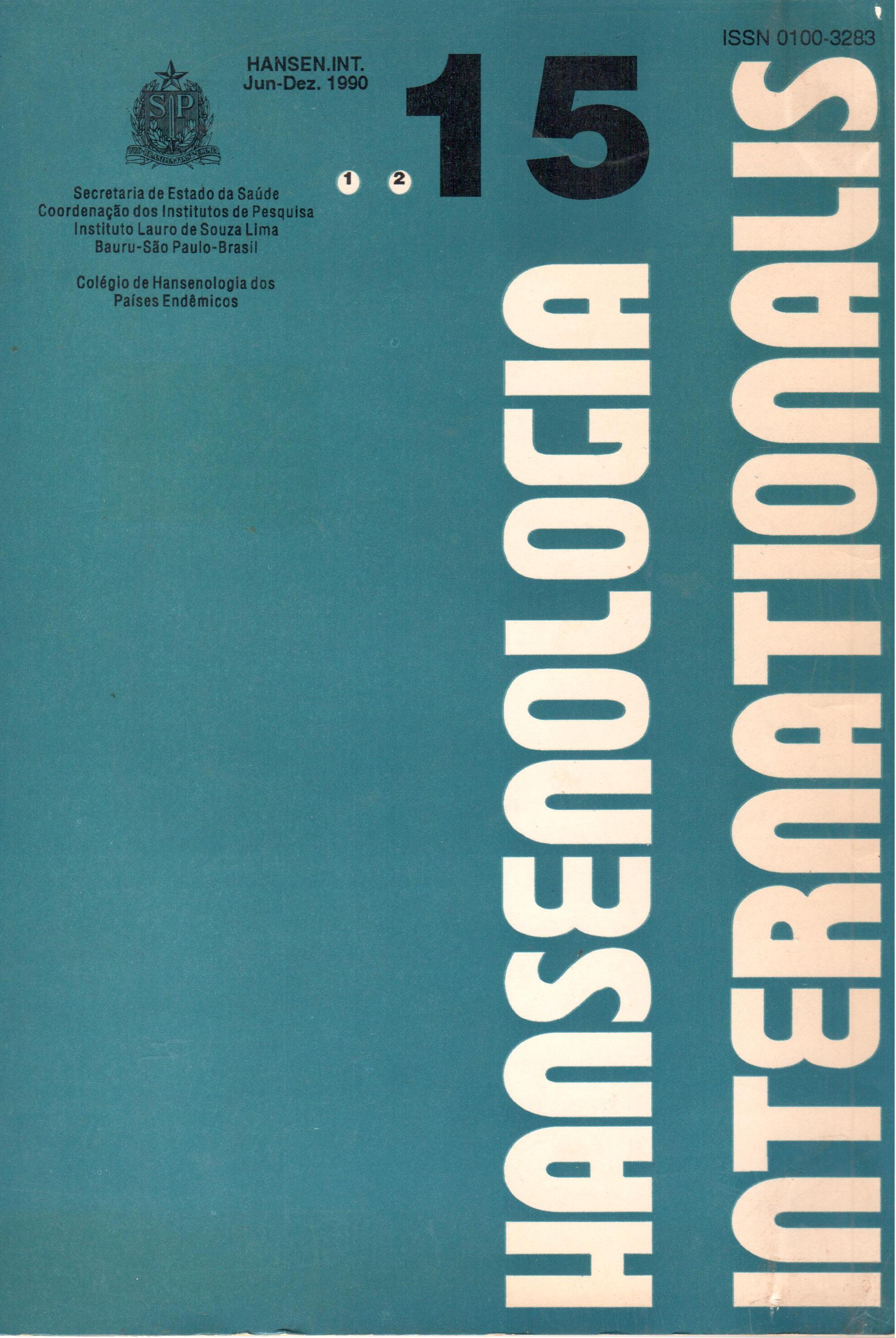Abstract
An analysis of evolutive correlation in skin and lymphonodes of 30 patients with lepromatous leprosy was performed. Ten were active lepromatous in progression, 10 active lepromatous in regression and 10 residual lepromatous (inactive). The analysis of the skin and lymphonodes biopsies in the two former groups showed a remarkable heterogeneity in the constitution of specific granuloma in lymphonodes contrasting with the homogeneous constitution of cutaneous granuloma. In the third group whose material was taken from necropsies, the residual infiltrate in skin were discret, meanwhile the lymphonodes maintained, in the majority of cases, extensive paracortical, residual, macrophagic granulomas. The macrophagic granuloma in lymphonodes ordinarily showed a characteristic stratification with a tendency of younger macrophages and solid bacilli to locate in cortical and paracortical areas, whereas macrophages with regressive characteristics containing granular bacilli were situated in deep paracortical areas. There was an intense depletion of paracortical lymphocitic population, follicular hyperplasia and numerous plasma cells in the active lepromatous, whereas in residual lepromatous the follicular hyperplasia disappears, medular plasma cells are maintained and the paracortical lymph ocytic depletion remains. Three regressive and one residual lepromatous presented alterations peculiar to erythema nodosun leprosum in lymphon odes and peri vascular amyloid deposition were found in two inactive lepromatous.
References
2. BASO MBRIO, G.A. Es tudio de las adenopatias en la lepra. Sem. Med., 38:1213-1234, 1931.
3. BASTAZINI, I. Contribuição ao estudo da reação hansênica. Botucatu, 1973. (TeseFaculdade de Ciências Médica de Botucatu).
4. BERNARD, J.C. & VASQUEZ, C.A. Adenitis gigantocelular lepromatosa. Leprologia, 18:45-54, 1973.
6. CONVIT, J.; PINARDI, M.E.; ARIAS ROJAS, F. Some considerations regarding the immunology of leprosy. Int. J. Leprosy, 39:556-564, 1971.
6. CORTIER, H.; TURK, J.L.;SOBIN, L. A proposal for a standartized system of reporting human lymphonode morphology in relation to immunological function. Bull. WHO 47:375-417, 1972.
7. DECOUD, A.G.; ANANOS, V.; FRACCH IA, A.; FRACCHIA, R. Estudio de los vasos linfáticos en la lepra lepromatosa. Leprologia. 8:151-152, 1963.
8. DESIKAN, K.L. Morphological changes in the lymphonodes in leprosy with special reference to the unstable forms. Lepr. India. 46:35-38, 1974.
9. DESIKAN, K.V & JOB, C.K Leprous lymphadenitis: demonstration of tuberculoid lesions. Int. J. Leprosy 34:147-154, 1966.
10. GAAFAR, S.M & TURK, J.L. Granuloma formation in lymphonodes. J.Path. 100:9-20, 1970.
11. GODAL, T.; MYRVANG, B.; STANFORD, J.L; SAMUEL, D.R. Recent advances in the immunology of leprosy with special reference to new approaches in immunoprophylaxis. Bull. Inst. Pasteur, 72:273-310, 1974.
12. GUPTA, J.C.; PANDA, P.K.; SHRIVASTAV, K.K; SINGH, S.; GUPTA, D.K. A histopathological study of lymphonodes in 43 cases of leprosy. Leer. India, 50:196-203, 1978.
13. HANSEN, A. apud DESIKAN, K.V. & JOB, C.K. Leprous lymphadenitis: demonstration of tuberculoid lesions. Int. J Leprosy. 34:147-1954, 1966.
14. KHANOLKAR, V.R. Pathology of leprosy. In: COCHRANE, R.G & DAVEY, T.F. Leprosy in theory and practice. 2.ed Bristol, Wright & Sons, 1964. p.125.
15. NOPAJAROONSRI, C. & SIMON, G.T. Phagocytosis of colloidal carbon in lymphonode. Amer. J. Path. 65:25-31, 1971.
16. RAASCH., F.0.; CAHILL, K.M.; HANNA, L.K. Histologic and lymphangiographic studies in pacients with clinicallepromatous leprosy. Int. J. Leprosy, 37:382-388, 1969.
17. RIDLEY, D.S. Skin biopsy in leprosy:histological interpretation and clinical application. Basle, CibaGeigy, 1977.57p.
18. SCHUJMAN, S. & VACCARO, A. Las adenopatias leprosas: estudio clinico, histologico y bacteriologico compara tivo de los ganglios en las formas lepromatosas y neural tuberculoides. Rev. Argent. Dermatosif._26:925-940, 1942
19. SHARMA, K.D & SHRIVASTAV, J.B. Lymphonodes in leprosy. Int. J. Leprosy, 26:41-50, 1958
20. SUGAI, K. & FUKUSHI, K. Histopathological studies on human leprosy (the Ist report): findings of lymphatic system. La Lepro, 25:159-171, 1956.
21. TURK, J.L & WATERS,M.F.R. Immunological basis for depression of cellular immunity and the delayed allergic response in patients with lepromatous leprosy. Lancet 2:436-438, 1968.
22. TURK, J. L. & WATERS, M. F. R. Immunological significance of changes in lymphonodes across the leprosy spectrum. Clin. Exp. Immunol.. 8:363-376, 1971.
23. VERMA, R.C.; BALAKRISHAN, K.; VASUDEVAN, D.M.; TALWAR, G.P. Lymphocytes bearing immunoglobin determinants in normal human lymphonodes and in pacients with lepromatous leprosy. Int. J. Leprosy, 39:20-24, 1971.
This journal is licensed under a Creative Commons Attribution 4.0 International License.
